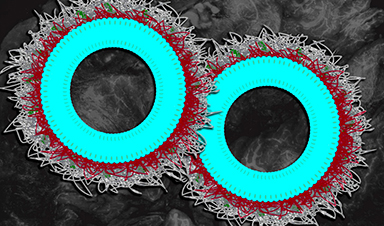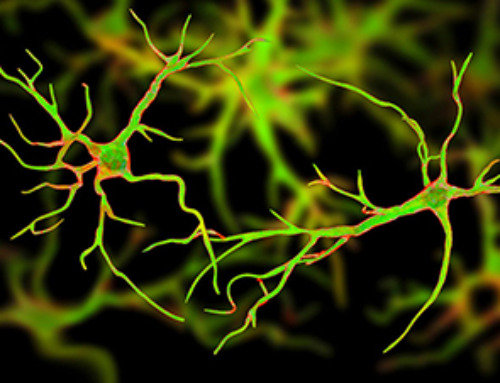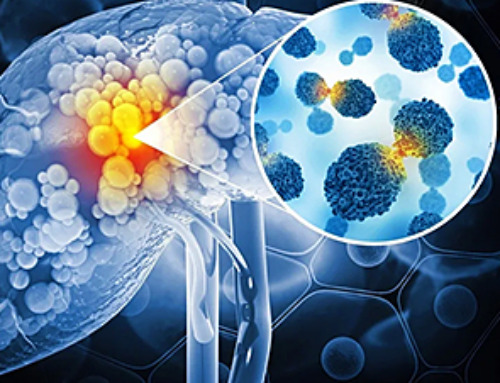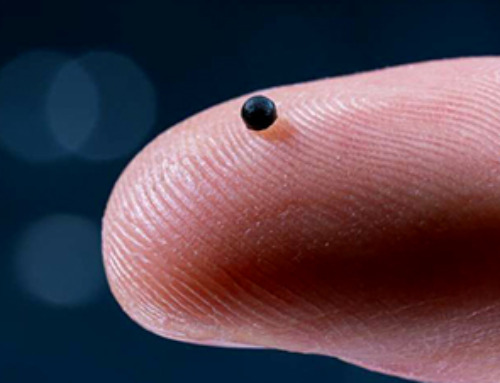A UCL study found that 70% of young people with long Covid recovered within 24 months, but recovery was less likely among older teenagers, females, and those from deprived backgrounds. Researchers emphasized the need for further investigation and collaboration to address unresolved cases.
A new study led by UCL researchers reveals that most young individuals diagnosed with long Covid three months after a positive PCR test had fully recovered within 24 months.
The Children and young people with Long Covid (CLoCK) study, published in Nature Communications Medicine and funded by the National Institute for Health and Care Research (NIHR), is the world's largest longitudinal cohort study on long Covid in children.
The researchers, led by Professor Sir Terence Stephenson and Professor Roz Shafran (both UCL Great Ormond Street Institute of Child Health), asked young people aged 11 to 17 about their health three, six, 12 and 24 months after taking a PCR test for the Covid virus between September 2020 and March 2021. They also asked them to recall their symptoms at the time of taking the test.
In February 2022, the researchers published a consensus definition of long Covid which involved a young person having more than one symptom (such as tiredness, trouble sleeping, shortness of breath or headaches) alongside problems with either mobility, self-care, doing usual activities, having pain/discomfort, or feeling very worried or sad.
The researchers used this definition for their new study, which examined data from 12,632 young people who had a PCR test for SARS-CoV-2 (the virus that causes COVID-19). They found that around 25-30% of young people met the research definition of long Covid 24 months after their initial PCR test.
Study Results: Recovery Trends
Of the 12,632 young people in total, there were 943 who had tested positive when first approached and who provided answers at every time point: three, six, 12 and 24 months after their original test.
Of these 943 young people, 233 met the research definition of long Covid three months after their initial positive test. At six months,135 continued to meet the research definition of long Covid. At 12 months, 94 continued to fulfill the long Covid research definition.
However, only 68 of these 943 children and young people (7.2%) continued to fulfill the long Covid research definition when contacted 24 months after their initial positive test.
This means that 24 months after a proven Covid infection, 165 of the 233 young people (70%) who had long Covid three months after the infection and provided information at every time point in the research had recovered. But 68 of the 233 (30%) had not.
Key Demographic Findings
Older teenagers and the most deprived were less likely to have recovered. And, strikingly, females were almost twice as likely to still meet the research definition of long Covid at 24 months, compared to males.
However, the researchers note that they did not assess menstruation and some symptoms (such as headaches and tiredness) may be attributable to pre-menstrual syndrome given the high proportion of girls.
Study Chief Investigator and first author, Professor Sir Terence Stephenson, said: "Our findings show that for teenagers who fulfilled our research definition of long Covid three months after a positive test for the Covid virus, the majority have recovered after two years. This is good news but we intend to do further research to try to better understand why 68 teenagers had not recovered."
The CLoCK study is a major study funded by the National Institute for Health and Care Research (NIHR) and UK Research and Innovation (UKRI) to help improve understanding of the causes, symptoms, and treatment of the longer-term effects of Covid-19 in people who have not become unwell enough to be admitted to hospital.
The study was co-led by the UK Health Security Agency (UKHSA) in collaboration with researchers at Great Ormond Street Hospital for Children NHS Foundation Trust (GOSH), Imperial College London, King's College London, Manchester University NHS Foundation Trust, the Universities of Bristol, Cambridge, Edinburgh, Liverpool, Manchester and Oxford, and University College London Hospitals NHS Foundation Trust. CLoCK also works closely with a patient and public involvement advisory group.
Following the 24-month results, data from all time points are now publicly available to other researchers.
The UCL researchers recently published a commentary, alongside colleagues at GOSH and the University of Brighton, on why better collaboration is needed between clinicians, interventionalists, epidemiologists, statisticians and those with lived experience to ensure a more effective, coordinated response ahead of future pandemics.
Study limitations
The symptoms reported by participants at the time of testing are subject to recall bias as they were reported at the time of first contact with the CLoCK study. However, three-month, six-month, 12-month, and 24-month symptoms were reported at the time they were being experienced.
Of the 31,012 children and young people invited to fill in a questionnaire 24-months post-PCR test, 12,632 of them participated and so this is a self-selected group which may introduce bias in the results.
Original PCR tests were taken before the Delta and Omicron variants became dominant, so the findings may not reflect the long-term effects of these variants.
Children and young people self-reported their symptoms. In some instances, such as to assess shortness of breath, it may have been better to conduct in-person medical interviews. However, this was not feasible or practical during the study period.
Importantly, the study primarily focuses on children and young people in England, and the findings may not be directly applicable to other populations or countries with different healthcare systems, vaccination rates, and demographics.
Reference: "A 24-month National Cohort Study examining long-term effects of COVID-19 in children and young people" by Terence Stephenson, Snehal M. Pinto Pereira, Manjula D. Nugawela, Emma Dalrymple, Anthony Harnden, Elizabeth Whittaker, Isobel Heyman, Tamsin Ford, Terry Segal, Trudie Chalder, Shamez N. Ladhani, Kelsey McOwat, Ruth Simmons, Laila Xu, Lana Fox-Smith, CLoCk Consortium and Roz Shafran, 4 December 2024, Communications Medicine.
DOI: 10.1038/s43856-024-00657-x
News
The Stunning New Push to Protect the Invisible 99% of Life
Scientists worldwide have joined forces to build the first-ever roadmap for conserving Earth’s vast invisible majority—microbes. Their new IUCN Specialist Group reframes conservation by elevating microbial life to the same urgency as plants and [...]
Scientists Find a Way to Help the Brain Clear Alzheimer’s Plaques Naturally
Scientists have discovered that the brain may have a built-in way to fight Alzheimer’s. By activating a protein called Sox9, researchers were able to switch on star-shaped brain cells known as astrocytes and turn them into [...]
Vision can be rebooted in adults with amblyopia, study suggests
Temporarily anesthetizing the retina briefly reverts the activity of the visual system to that observed in early development and enables growth of responses to the amblyopic eye, new research shows. In the common vision [...]
Ultrasound-activated Nanoparticles Kill Liver Cancer and Activate Immune System
A new ultrasound-guided nanotherapy wipes out liver tumors while training the immune system to keep them from coming back. The study, published in Nano Today, introduces a biodegradable nanoparticle system that combines sonodynamic therapy and cell [...]
Magnetic nanoparticles that successfully navigate complex blood vessels may be ready for clinical trials
Every year, 12 million people worldwide suffer a stroke; many die or are permanently impaired. Currently, drugs are administered to dissolve the thrombus that blocks the blood vessel. These drugs spread throughout the entire [...]
Reviving Exhausted T Cells Sparks Powerful Cancer Tumor Elimination
Scientists have discovered how tumors secretly drain the energy from T cells—the immune system’s main cancer fighters—and how blocking that process can bring them back to life. The team found that cancer cells use [...]
Very low LDL-cholesterol correlates to fewer heart problems after stroke
Brigham and Women's Hospital's TIMI Study Group reports that in patients with prior ischemic stroke, very low achieved LDL-cholesterol correlated with fewer major adverse cardiovascular events and fewer recurrent strokes, without an apparent increase [...]
“Great Unified Microscope” Reveals Hidden Micro and Nano Worlds Inside Living Cells
University of Tokyo researchers have created a powerful new microscope that captures both forward- and back-scattered light at once, letting scientists see everything from large cell structures to tiny nanoscale particles in a single shot. Researchers [...]
Breakthrough Alzheimer’s Drug Has a Hidden Problem
Researchers in Japan found that although the Alzheimer’s drug lecanemab successfully removes amyloid plaques from the brain, it does not restore the brain’s waste-clearing system within the first few months of treatment. The study suggests that [...]
Concerning New Research Reveals Colon Cancer Is Skyrocketing in Adults Under 50
Colorectal cancer is striking younger adults at alarming rates, driven by lifestyle and genetic factors. Colorectal cancer (CRC) develops when abnormal cells grow uncontrollably in the colon or rectum, forming tumors that can eventually [...]
Scientists Discover a Natural, Non-Addictive Way To Block Pain That Could Replace Opioids
Scientists have discovered that the body can naturally dull pain through its own localized “benzodiazepine-like” peptides. A groundbreaking study led by a University of Leeds scientist has unveiled new insights into how the body manages pain, [...]
GLP-1 Drugs Like Ozempic Work, but New Research Reveals a Major Catch
Three new Cochrane reviews find evidence that GLP-1 drugs lead to clinically meaningful weight loss, though industry-funded studies raise concerns. Three new reviews from Cochrane have found that GLP-1 medications can lead to significant [...]
How a Palm-Sized Laser Could Change Medicine and Manufacturing
Researchers have developed an innovative and versatile system designed for a new generation of short-pulse lasers. Lasers that produce extremely short bursts of light are known for their remarkable precision, making them indispensable tools [...]
New nanoparticles stimulate the immune system to attack ovarian tumors
Cancer immunotherapy, which uses drugs that stimulate the body’s immune cells to attack tumors, is a promising approach to treating many types of cancer. However, it doesn’t work well for some tumors, including ovarian [...]
New Drug Kills Cancer 20,000x More Effectively With No Detectable Side Effects
By restructuring a common chemotherapy drug, scientists increased its potency by 20,000 times. In a significant step forward for cancer therapy, researchers at Northwestern University have redesigned the molecular structure of a well-known chemotherapy drug, greatly [...]
Lipid nanoparticles discovered that can deliver mRNA directly into heart muscle cells
Cardiovascular disease continues to be the leading cause of death worldwide. But advances in heart-failure therapeutics have stalled, largely due to the difficulty of delivering treatments at the cellular level. Now, a UC Berkeley-led [...]





















